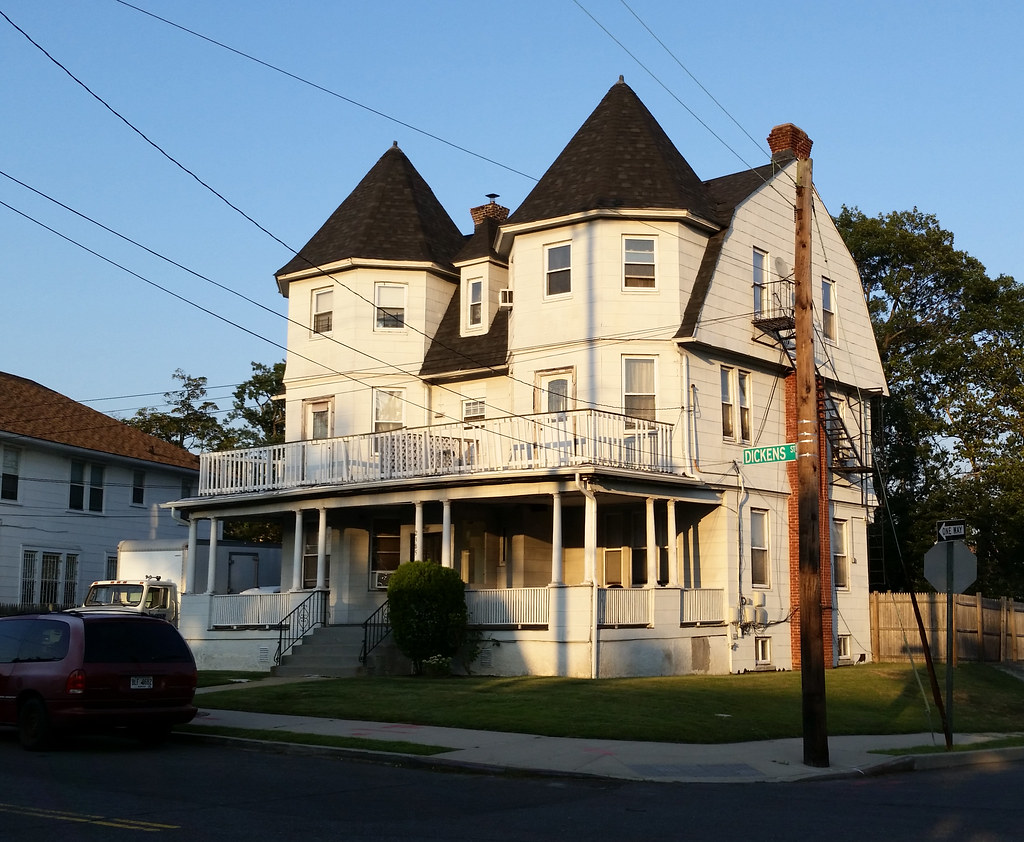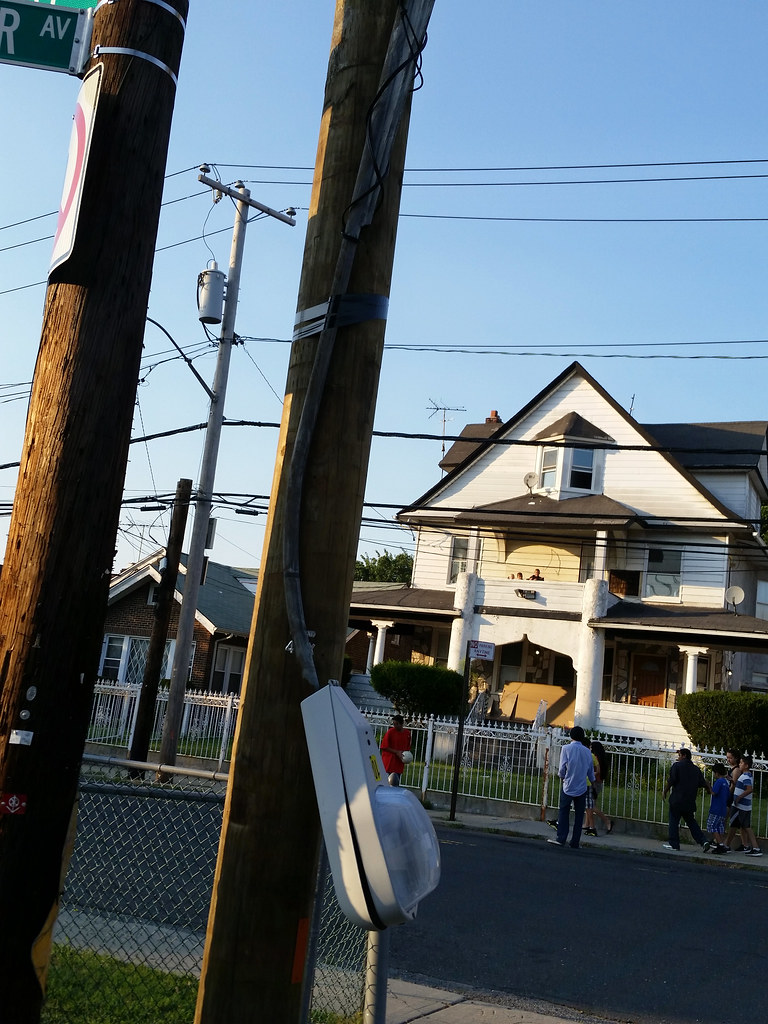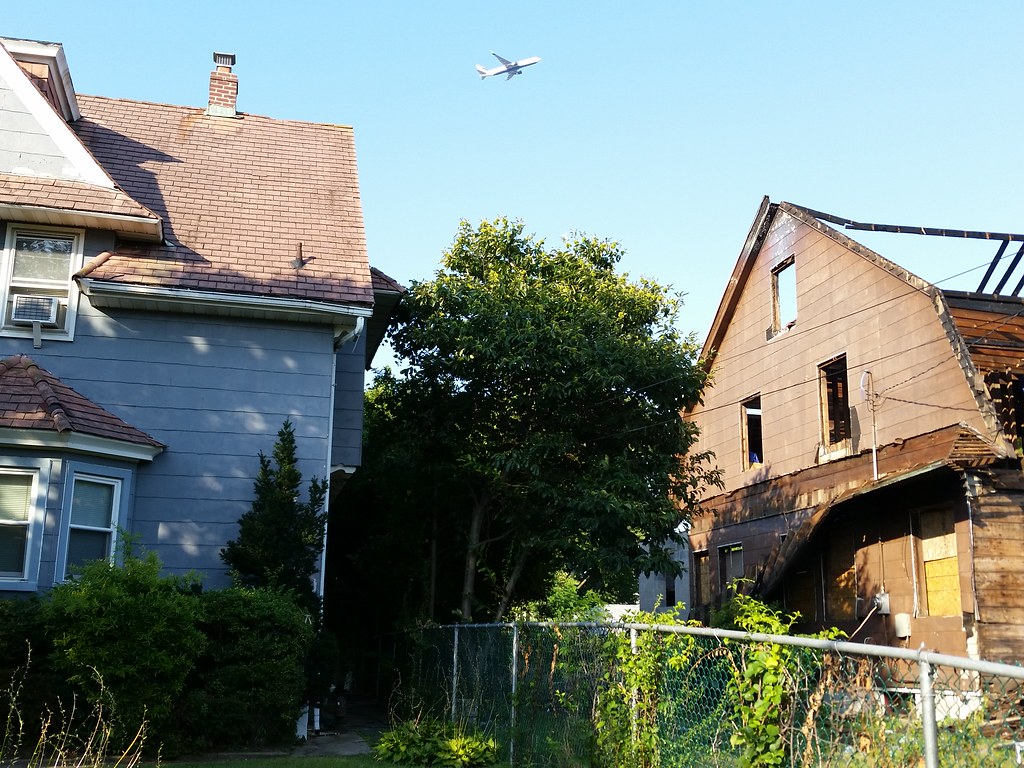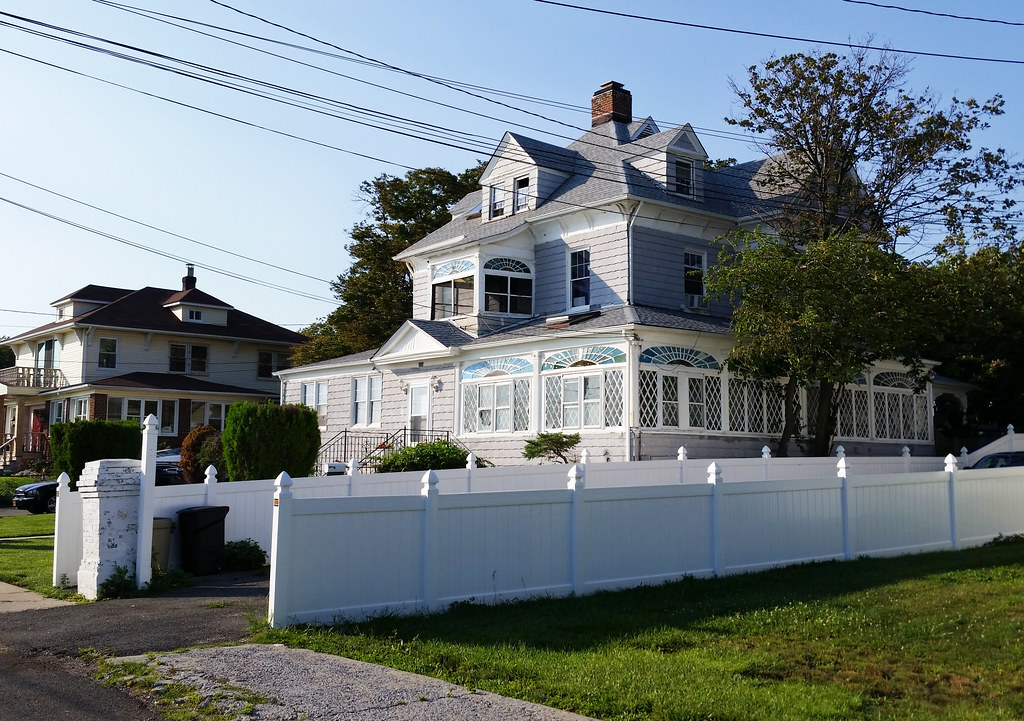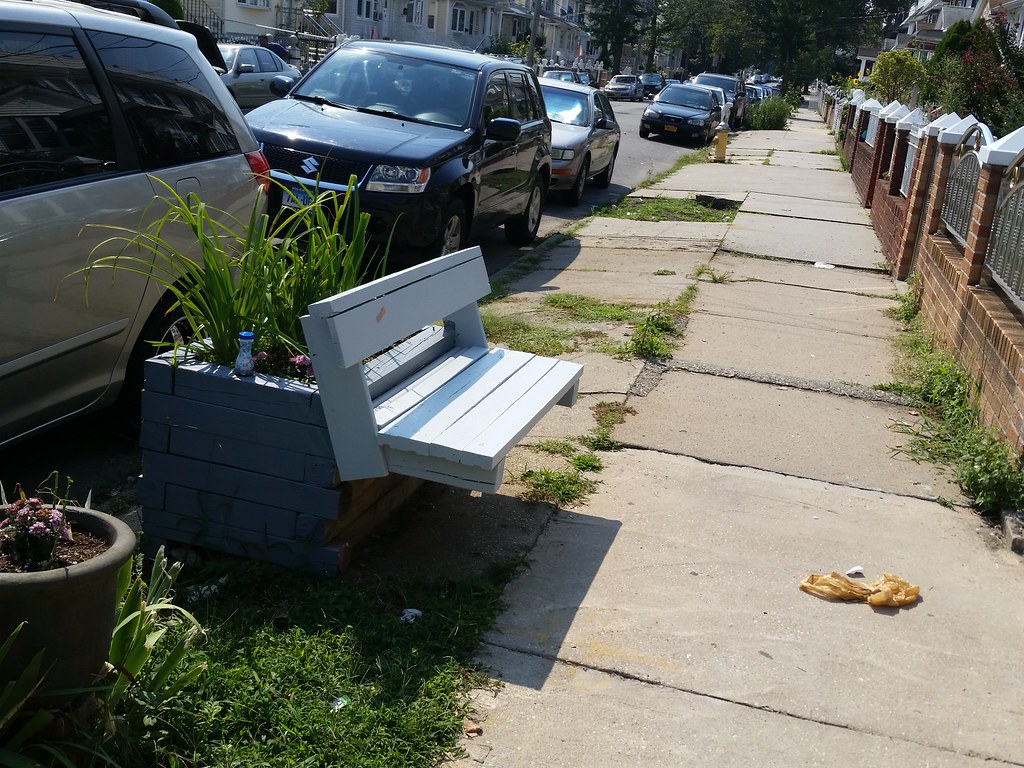
"WELCOME" is carved into the bottom step of the row house that faces this bench.

THIS AREA [apparently used to be] PROTECTED BY
THE ROCKAWAY PENINSULA CIVILIAN PATROLS
Civilian Radio Motor Patrol
Direct Contact With Your Police Dept.
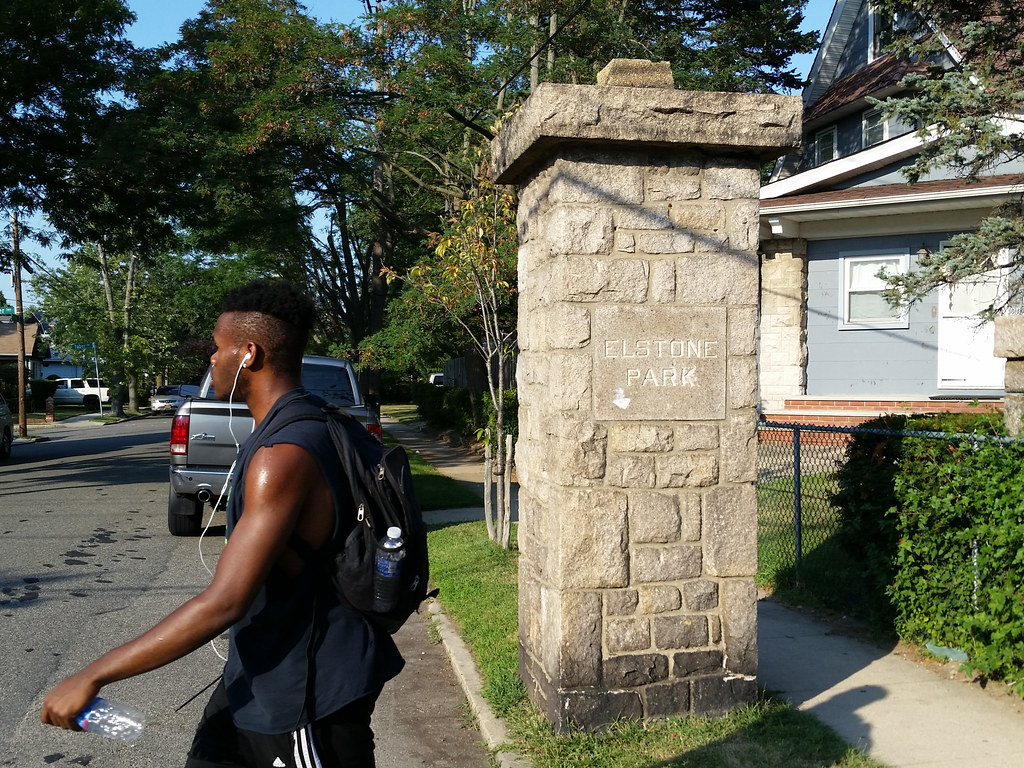
Elstone Park was an early-20th-century residential development here in Bayswater. As far as I can tell, its first houses were summer cottages that were rented out starting in 1906. Sales began in 1908, when the "substantially and artistically constructed" furnished cottages were put up for auction, along with "large villa plots" for buyers who wanted to build their own homes.
The Elstone Park Realty Company also thoroughly remodeled the nearby Bayswater Hotel, which had been closed for some time, and reopened it as the Elstone Park Hotel in 1908. According to some newspaper ads from 1912, the new and improved hotel had much to offer its guests, including unsurpassed cuisine, high-class cabaret, bridge whist, and Japanese servants.
The hotel seems to have been a social hub for the community as well, hosting such events as an "old-fashioned country dance", a "fancy dress dance" at which prizes were awarded for "the prettiest, most original and most grotesque costumes", and weekly Friday-evening "amateur nights" that "opened a new field for the young genius[es] who desire to acquire fame in the footlight world".
One unusual remnant of Elstone Park exists in the form of an odd midblock traffic circle on Granada Place, just down the street from where I took this photo. Today the circle is home to a modest assortment of grasses, trees, and shrubs, but it was once the site of an elaborate fountain, reportedly lit up in the evening by colored electric lights, that was built as a centerpiece of the development. You can see an old postcard image of the fountain here. And this postcard features a view down Granada Place (then known as Summit Drive) from around the same location as my photo above. You can see the fountain in the background, and you can also see the stone pillars that are still standing today, the taller of which were apparently once topped by ornate lamps.
In 1912, William S. "Big Bill" Devery, a former NYC chief of police (from 1898 to 1901) and an owner of several Elstone Park houses, took the head of the Elstone Park Realty Company to court for removing four statues of goddesses from the fountain. I was surprised to find such a seemingly mundane dispute covered in a number of different newspapers, and, in a couple of cases, in such an enthusiastic and over-the-top fashion that I couldn't even tell for sure which parts were meant literally and which were jokes.
It turns out that Big Bill had long been a favorite subject of the press. He was a juicy target during his days with the police department, a brazenly corrupt chief growing wealthy off of graft money. At the same time, his colorful, quotable, "picturesque" personality endeared him to the very reporters trying to take him down. As the crusading journalist Lincoln Steffens once put it: Devery was "no more fit to be a chief of police than the fish man was to be director of the Aquarium, but as a character, as a work of art, he was a masterpiece."
Devery was also an original co-owner of the New York Highlanders, the baseball team now known as the Yankees. He and his partner owned the franchise from 1903 to 1915, and legend, if not established fact, has it that he gave the team its famous N-superimposed-on-a-Y insignia, borrowing the design from an old police medal of honor (photo) created by Tiffany & Company.
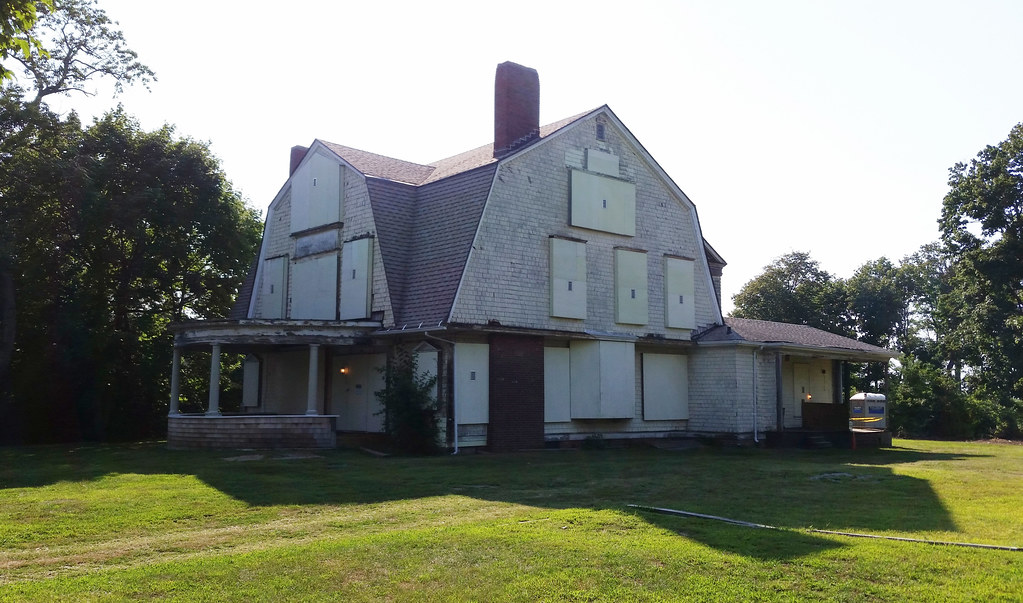
Now part of Bayswater Point State Park, this "circa 1900 shingle-style house" was reportedly once an inn; the name "Sunset Lodge" can still be found on its gateposts.
The last person to own the property was Victoria Greenidge, a wealthy recluse who bought the place with her husband Joseph in the 1940s. The couple outfitted the house with "fine furnishings and antiques" but never actually moved in, residing instead in a guest cottage around back. They began hoarding newspapers and filled the cottage with so many towering piles that there were only narrow "channels" of open space remaining for getting around from room to room.
In the years after Joseph died in 1972, Victoria began slipping into senility. In her vulnerable state, she fell victim to an "allegedly criminal pattern of undue influence by a succession of lawyers, workmen, housekeepers, advisers and helpers" looking to get their hands on her money. Despite her considerable financial resources, a 1980 NY Times article found her living a "pauperlike existence" in a nursing home at the age of 78 or 79.
Following her death in 1985, Sunset Lodge and the surrounding land were handed over, in accordance with her wishes, to the Audubon Society, which later sold the property to the state parks agency. The house, thoroughly looted and vandalized by the time Victoria passed away, has stood vacant ever since.
There is a glimmer of hope for the place, however, as the state recently dedicated $80,000 to stabilizing the structure. Thinking optimistically, the local city councilman in 2010 proposed turning the house into a bed-and-breakfast, but I imagine it will be quite difficult to come up with the money for a full renovation.
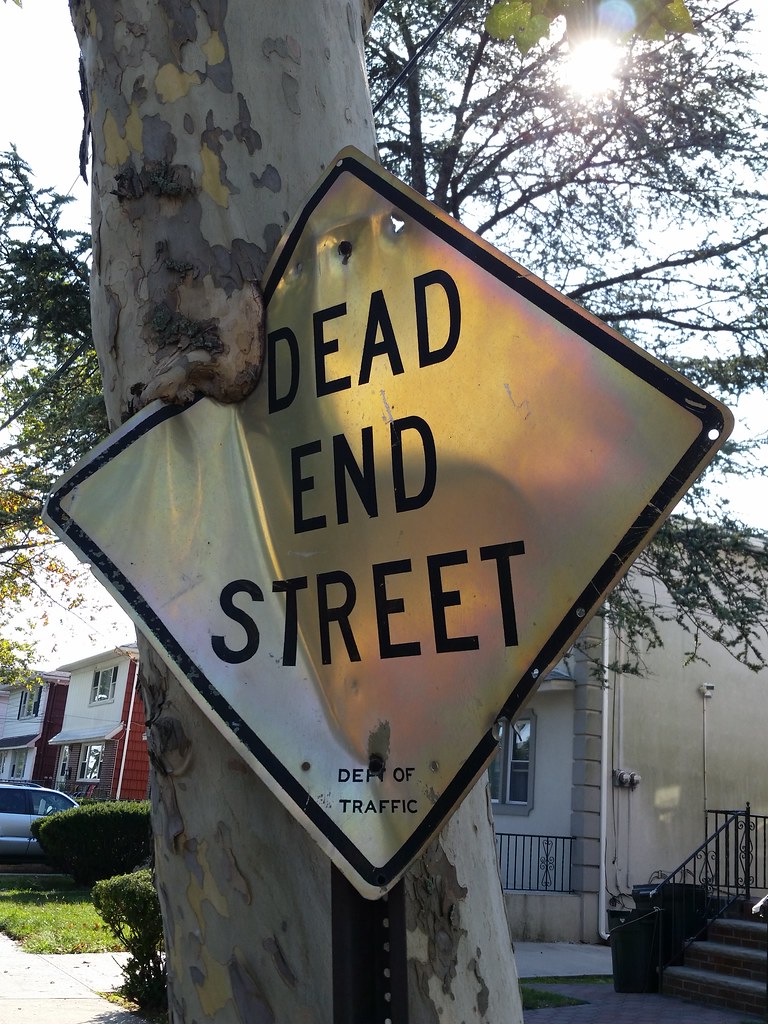
The Department of Traffic hasn't existed since the late 1970s or '80s.


Bayswater Point State Park is the former site of "what may have been the biggest mansion to go up in Far Rockaway", a 175-foot-long "mix of Tudor and other English styles" (old pictures here and here) built around 1907-08 by the banker Louis A. Heinsheimer. Mr. Heinsheimer wasn't given much time to enjoy his luxurious new palace, however: he died in early 1909 following an operation for appendicitis.
In 1925, with "Far Rockaway [having] lost most of its pretensions of grandeur", Mr. Heinsheimer's brother donated the mansion to a hospital to be used as a "convalescent home for crippled children". According to a 1987 Time magazine article, the house subsequently served as
a private school for retarded children and later a rabbinical school. Now it is a bag lady of a building. A fire has destroyed much of the roof; plants grow in piles of rubble; the bones of rodents lie in corners. Vandals have smashed windows and sprayed the walls with graffiti.The article goes on to describe how a salvage company was at that time removing "window frames, carved moldings, gargoyles and anything else of architectural interest that can be pried loose and sold" prior to the house being demolished and the property turned into parkland.
The only part of the structure left standing in the park was the conservatory, seen in this 1996 aerial image, although that too has come down in the years since. The mansion hasn't quite been wiped off the face of the earth, however. As pictured above, its foundation can still be seen poking up through the grass in the middle of the park (aerial view).
I'm walking every street in New York City.
This is the counterpoint to my walk across the US. Instead of seeing a million places for just a minute each, I'm going to spend a million minutes exploring just one place. By the time I finish walking every block of every street in all five boroughs, I'll have traveled more than 8,000 miles on foot — all within a single city. Details!
Email me at matt@imjustwalkin.com
Subscribe to my email list
Maps: Progress | Photos
Your donations allow me to keep walking full-time. If you think what I'm doing is valuable and you'd like to offer some support, I would be very grateful. On the other hand, if you think I'm a worthless bum, feel free to email me and tell me to get a job, bozo. Both are excellent options!





